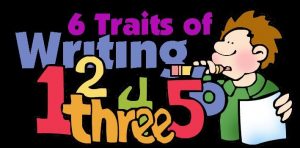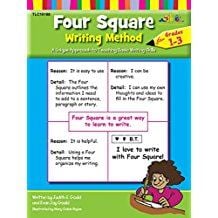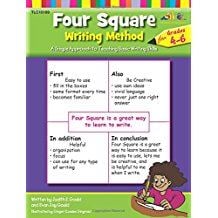by C. Elkins, OK Math and Reading Lady
This will be the final part of my writing series. The focus today is on the Six Traits of Writing.  The six traits are a tool for teaching writing, leading to a quality product. They are not an organizational model (such as Four Square). This model was originally developed by the Northwest Regional Educational Laboratory in Oregon. Here is a link to their website which includes more resources, definitions, and research: http://educationnorthwest.org/traits/
The six traits are a tool for teaching writing, leading to a quality product. They are not an organizational model (such as Four Square). This model was originally developed by the Northwest Regional Educational Laboratory in Oregon. Here is a link to their website which includes more resources, definitions, and research: http://educationnorthwest.org/traits/
I will refer to the six traits, although Education Northwest added a seventh trait (presentation) and titles it “Six + 1 Trait Writing.” Keep reading to find some FREE RESOURCES.
So what are the Six Traits that define quality writing? See full definitions by clicking HERE:
- Ideas: This is the main message or topic.
- The message is written clearly.
- It is interesting and shows understanding of the topic.
- Organization: This is the structure of the piece. Connections are strong.
- Everything written links to the message.
- A good beginning and ending grab the reader.
- Organization is evident. (Link to text structures of sequence, compare-contrast, description, problem-solution, and cause-effect.)
- Sentence Fluency: This is the flow and rhythm of the writing.
- Varied sentence beginnings and lengths.
- Does it sound smooth and interesting, showing good use of transitions?
- Are some words emphasized for effect?
- Voice: This is the writer’s personal tone coming through.
- The writing sounds like the author.
- The author’s feelings and style come through the writing.
- It shows sincerity, honesty, and conviction.
- Word Choice: This is the vocabulary the author chooses.
- Selects the best words to fit the author and the message.
- Does not repeat words too many times.
- Replaces overused words. (Search for “Said is Dead” on Pinterest.)
- Natural, but precise and vivid.
- Might include well-placed figurative language.
- Conventions: This is the mechanical correctness – the rules of language. Expectations should be based on grade level lessons and standards.
- Spelling
- Grammar
- Punctuation
- Capitalization
- Presentation (the +1 trait): This is how the writing looks on the page – the overall appearance.
- text or font
- neatness / handwriting
- graphics
- spacing and borders

